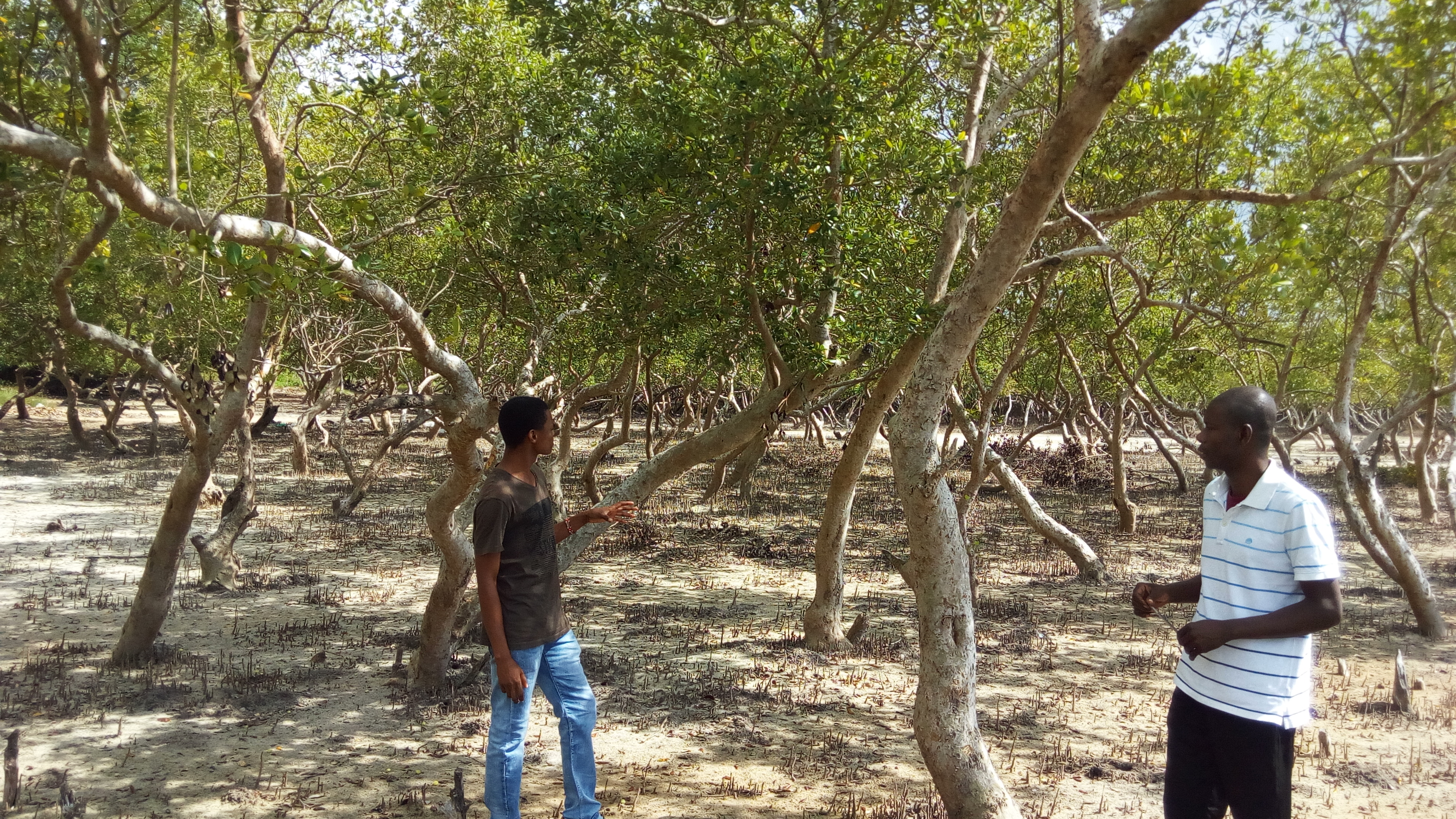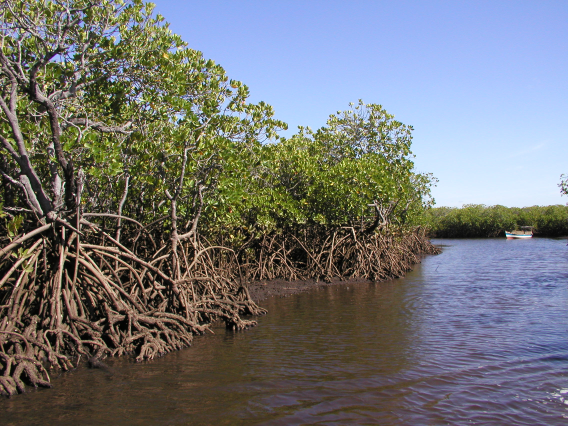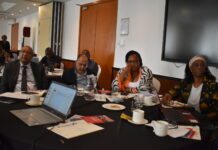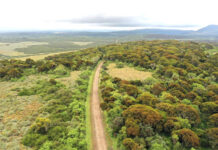By Mazera Ndurya
A community marine conservation project is raising waves in the international waters putting an otherwise sleepy village in Kenya’s South Coast into the world map.
Gazi, located about 40 kilometers south of the Port City of Mombasa is not an ordinary village. It is one of the areas in the world known for blue carbon trading and a robust research center (blue carbon is carbon captured by the world’s oceans and coastal ecosystems).
Today, because of the successful mangrove rehabilitation project dubbed Mikoko Pamoja, an initiative of the local community and the Kenya Marine and Fisheries Research Institute (KMFRI), Gazi bay is a model that continues to attract scholars from all over the world.
Mikoko Pamoja is the first community-based project in the world to use the sale of carbon credits to fund mangrove forest conservation and community development.
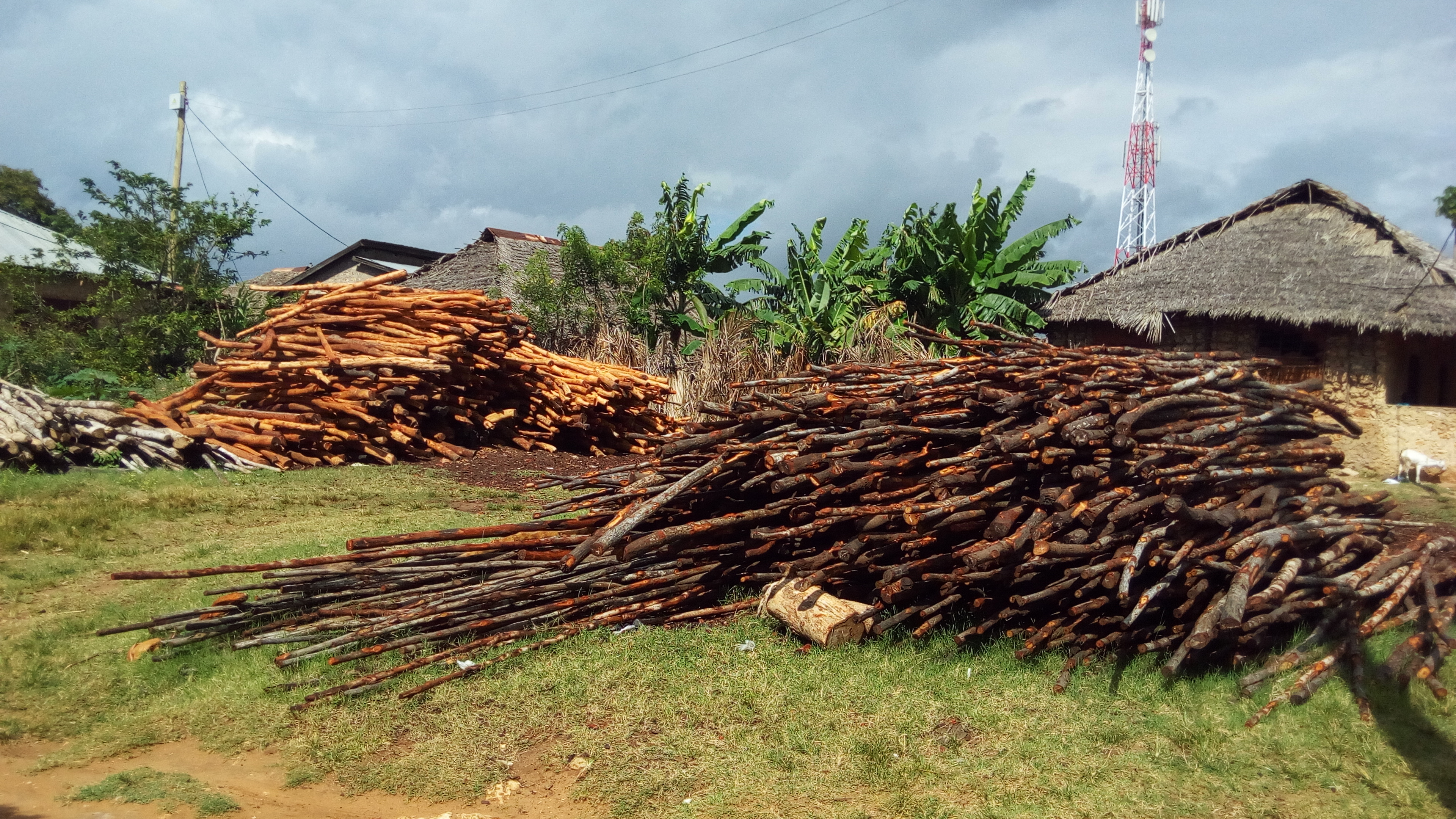
Ecuador, Costa Rica, Sri Lanka, Vietnam, Madagascar, Mozambique, and Tanzania are already using Gazi as a successful case to be replicated in their countries.
Belgium Professor, Farid Dahdouh-Guebas merely stumbled on Gazi, a small fishing village in Kwale County. That was in 1993 when he joined a team of Italian students on a research expedition to Gazi.
In fact, according to Prof Dahdouh-Guebas, Gazi was an after-thought because their research base was along the Mida Creek in Kilifi County. Little did he know that the accidental visit to Gazi would be a turning point in both his scientific and social status.
Some 22 years down the line, the Professor has been to Gazi innumerable times either for research or to follow up on his students mainly Masters and Ph.D. students from the Free University of Brussels.
At a personal level, Prof Dahdouh-Guebas did not only fall in love with the natural habitat that has made the village, a world-class research hub on mangroves marine ecosystem but with the community from where his wife comes from.
The Prof is married to a local lady Fatma with whom they have three children.
“I keep on sending students for the research and internship to Gazi because of the work that has been done here making it one of the most studied mangrove areas in the world.
“What makes this village a favorite destination is not just the mangroves, it has the best learning environment because it is quiet and the local residents are hospitable,” said Prof Dahdouh – Guebas who is currently working on a research on mangrove crabs.
It is here where a community carbon offset project commonly known as Mikoko Pamoja, is drawing researchers and students from Kenya and the world to learn how such a small village has been able to interface science and culture for social and economic development.
Mikoko Pamoja was started in 2013 at Gazi bay as a small carbon offset project and has partnered with a UK based Standard Organization called Plan Vivo Standards to sell approximately 3000 tons of carbon over a crediting period of 20 years.
What started as a small community project mainly dealing with restoration of degraded mangrove forests has been catapulted into international fame. Mikoko Pamoja is among the first of a kind in the world to start selling carbon credits from mangroves (blue carbon) using standardized procedures.
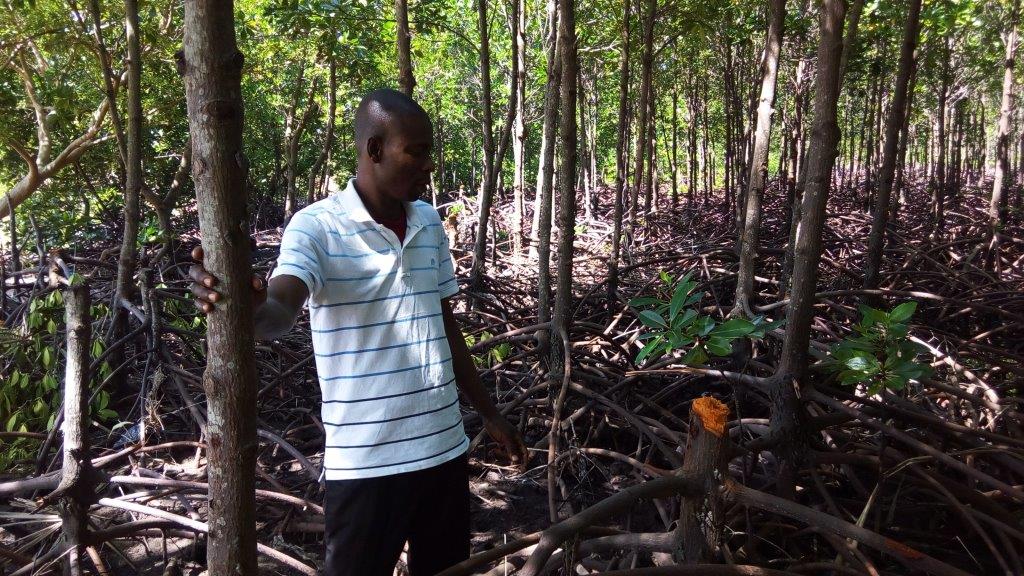
According to the project developer and Chief Scientist at the Kenya Marine and Fisheries Research Institute (KMFRI), Dr. James Kairo said such efforts have sparked a flurry of activities even at the national level.
Dr. Kairo, one of the founding researchers at Gazi KMFRI field station and now a leading light in the conservation of mangroves has lasting memories of the village.
“Reminiscing Gazi of 1980’s, there was no electricity, no running water, no iron-roofed houses, and no hospital. The population then was nearly 1000, mostly fishermen.
Today’s, Gazi is a ‘big village’ with over 4000 residents mostly fishers. We have main grid electricity, running water, bungalows, banking services, and more so a vibrant youth,” he said.
Dr. Kairo is very optimistic about the future of Gazi saying in the years to come people will be telling a different story.
The fishery in Gazi bay is what drives 80 percent of the economy of the village.
“This is one of the success stories that is already being replicated not only in other parts of the Coast like Vanga and Mombasa but in other countries as well making Gazi a focal point for mangrove research,” he said.
Dr. Kairo who is a member of the International Blue Carbon Scientific Working Group says the time is ripe to replicate the project to other areas of the Coast.
Working under the banner of the Blue Forest Project Dr. Kairo says the next course of action is to provide an evidence-based experience that will support replication, upscaling and adoption of the blue carbon offset projects by the international community.
Vanga is the next stop as plans are afoot to spread the project to Mombasa County. “The choice of Vanga was necessitated by the fact that the social structure, as well as prevailing environmental settings of the area, is similar to that in Gazi.
“Mangroves in Vanga suffer similar human pressure to those in Gazi that include population pressure, poor governance, and lack of awareness leading to deforestation and degradation in the Pilot area,” said Dr. Kairo.
Dr. Kairu said Mangrove like any other marine resource should be utilized well to help in uplifting the living standards in the community.
“We created awareness to the community and showed them how the resources that surround them can move them from poverty to a better living standard”
“The Gazi Community has started reaping benefits of a conservation effort through earnings from payment for ecosystem services (PES) and eco-tourism proceeds from the boardwalk in the mangrove forest,” he said.
One of the landmark projects that has been set up using funds generated from carbon credit is that of water supply to the village
But most importantly, the success of the project has brought a new interest in the national government leading to the development of robust National Mangrove Management Plan from where policy guidelines will be crafted and implemented.
The management plan recognizes the important role that mangrove forests play in environmental conservation and economic well-being.
“For a long time, the management of mangrove resources in Kenya was based on the harvesting of wood products and not on other essential roles the ecosystem play in fishery production, climate change regulation, and shoreline protection.
“Lack of a management plan to guide utilization of mangrove resources has led to losses and degradation of mangrove habitat,” explains the Ministry of Environment, Natural Resources and regional Development Authorities in acknowledging the need for the management plan
The management plan was developed with the funding from the World Bank, through Kenya Coastal Development Project (KCDP).
Dr. Kairo said the management plan is a milestone because it enhances mangrove ecosystem integrity and recognizes its contribution to the economy of Kenya.
Mikoko Pamoja concept was one of the highlights of the 2015 Conference of Parties (COP) 21 in Paris France where it was presented as one of the blue solution projects raising the profile of Gazi in the world.
Mikoko Pamoja Project Coordinator Salim Abdalla, a direct beneficiary of the initiative, said all the money raised from the sale of carbon credits is used for mangrove conservation or for development projects selected and designed by local people.
Salim, a resident of Gazi said their project has a working scheme where the money is shared. “Some 32 percent of the money goes to community projects for Gazi and Makongeni villages while the remaining goes for administration and conservation.
“Under the carbon trade agreement, we are expected to plant 0.4hecatres of mangroves every year for the next 20 years,” he said.
He said the project is now planning to diversify its activities after completing water projects in the two villages and buying textbooks to schools.
“In future, we want to sponsor bright students to secondary schools and universities. Our next target is also to start a micro-finance project where local people can start saving and accessing credit facilities,” Said Salim.
At any given time, Gazi hosts about ten interns and scientists from Kenyan Universities and institutions of higher learning around the World.
Molly Czachur, a KMFRI intern from Bangor University, the UK who spent some time at Gazi said the Mikoko Pamoja carbon offset project now in its third year of carbon trading has revolutionized community involvement in science.
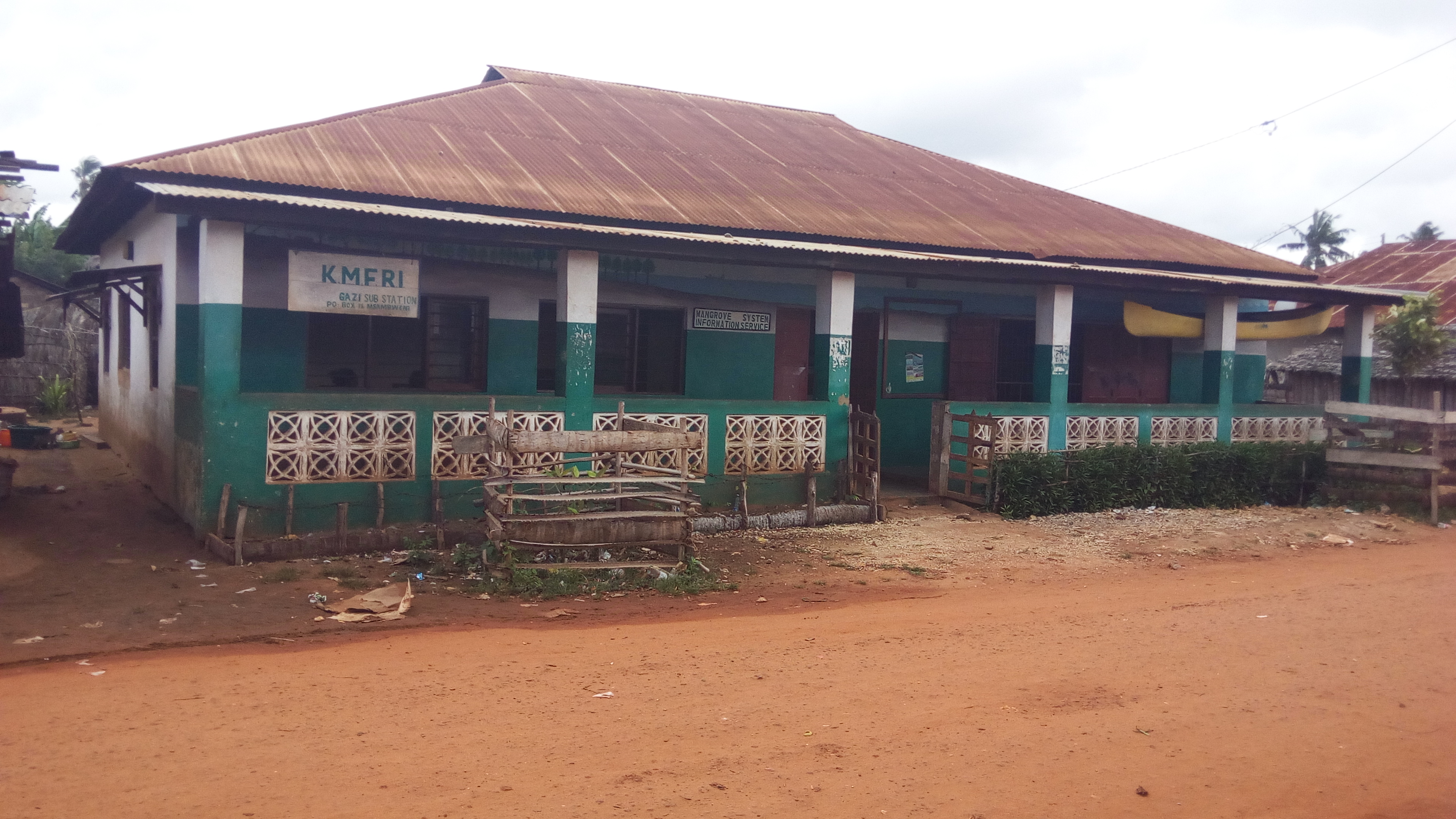
“The success of Mikoko Pamoja has been attributed to community involvement, strong science, government support as well as international partnerships,” she said.
Anne Wanjiru, a Social Impact Officer for Mikoko Pamoja and an intern at KMFRI – Gazi said many Payments for Ecosystem Services (PES) projects involving carbon have been initiated in many parts of the world.
“But it is difficult to find good examples of sustainable PES projects. As the first community type project in the world to benefit from the sale of carbon credits from mangroves, we aim to track social, ecological and environmental benefits emanating from Mikoko Pamoja and their sustainability,” she said.
According to Anne Wangari, a Ph.D. student/Embu University College Payment for Ecosystem Services (PES) schemes are increasingly contributing to livelihood improvement and reducing deforestation.
In turn, this reduces poverty and mitigating climate change. “Institutions play a major role in constraining or enabling access and property rights in PES schemes projects. Most of the Kenyan natural resource related legislation, policy, and institutional framework recognize and legalize incentive based schemes.
“However, even with the existence of such formal institutions, implementation of PES projects has been slow and difficult to upscale,” she said.
Fact box
There is 60,645 ha of mangroves along the Kenya coast. A large part of these forests occur in Lamu county (62%), followed by Kilifi (14%), Kwale (14%), Mombasa (6%) and Tana River (4%). All mangroves in Kenya have been mapped.

